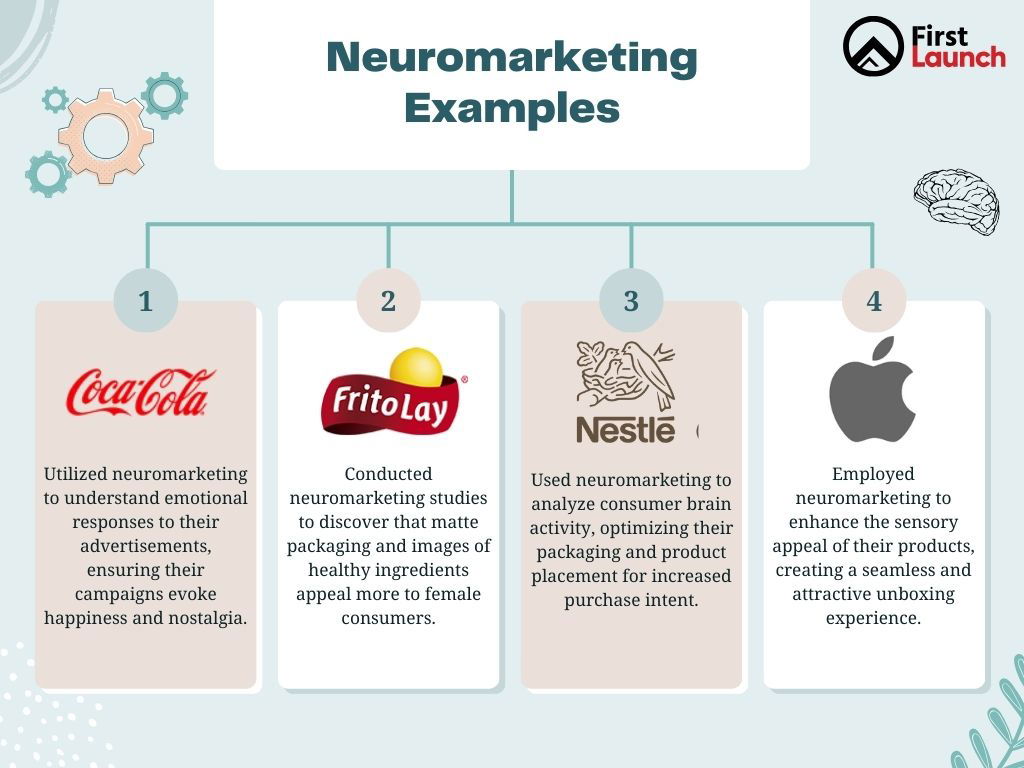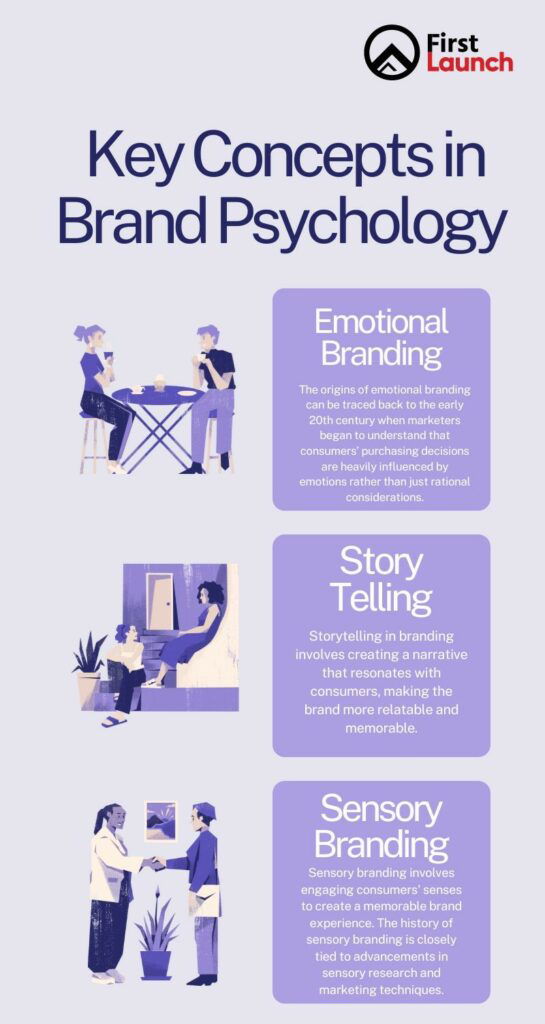The Neuromarketing Advantage: Brand Psychology Insights
by Waqar Ahmed on Tuesday Jun 11
Have you ever walked into a store and found yourself inexplicably drawn to a particular product? Or maybe a certain jingle gets stuck in your head for days after seeing an ad? These seemingly trivial experiences are actually the result of powerful psychological forces at play. This is where neuromarketing and brand psychology come in – a potent combination that helps branding agencies unlock the secrets of the consumer mind.
Tables of Content
What is Neuromarketing?
Advantages of Neuromarketing
Disadvantages of Neuromarketing
Examples of Neuromarketing
Applied Neuromarketing Techniques
Tools of Neuromarketing
Brand Psychology: The Power of Perception
Ethical Considerations and Future Trends
Conclusion

What is Neuromarketing?
Neuromarketing is a fascinating field that merges neuroscience and marketing. It involves studying how the brain responds to marketing stimuli to understand consumer behaviour better. By using tools such as brain imaging and biometric measurements, neuromarketers can gain insights into consumers’ subconscious responses to marketing messages, products, logos, and brands.
Advantages of Neuromarketing
Increased Understanding of Consumer Behavior
By delving into the subconscious mind, companies can uncover preferences and biases that consumers might not be aware of.
Enhanced Advertising Effectiveness
Neuromarketing helps fine-tune advertisements to elicit desired emotional responses, making them more persuasive.
Optimized Product Designs
Insights gained can lead to improved product designs that better meet consumer needs and preferences.
Creating Personalized Experiences
Understanding customers on a deeper level allows brands to create more than just satisfying shopping experiences. It will enable them to create experiences that make customers feel valued and understood.
However, neuromarketing also has some potential drawbacks:
Disadvantages of Neuromarketing
High Cost
Neuromarketing research can be expensive and requires specialized equipment and expertise, which may limit its accessibility for smaller companies.
Data Interpretation Challenges
Neuromarketing data can be complex and requires specialized skills to interpret accurately. Misinterpretation can lead to misleading conclusions.
Ethical Concerns
Neuromarketing raises ethical concerns about privacy and consumer manipulation. It’s crucial to ensure informed consent from participants and avoid deceptive practices.
Examples of Neuromarketing
Let’s see how some familiar brands have utilized neuromarketing:
Frito-Lay: EEG (electroencephalography) studies revealed that pleasure-related brain activity increased when consumers saw Doritos commercials with loud crunching sounds. This insight led to emphasizing the auditory experience in future campaigns.
Nestlé: fMRI (functional magnetic resonance imaging) research found that the brain’s reward centre activated more when participants saw images of Kit Kat bars with a smooth, creamy centre than those with a chunkier texture. This knowledge influenced product development and marketing efforts.
Coca-Cola: Eye-tracking studies showed consumers looked more at Coca-Cola ads featuring happy people and social gatherings. It reinforces the brand’s associations with positive feelings and shared experiences.
Apple: Apple is known for its sleek and innovative product designs, which have been shown to evoke a sense of excitement and desire in consumers. Neuromarketing studies have found that the brain’s reward centres are activated when people see Apple products, increasing brand loyalty and willingness to pay a premium price.

Applied Neuromarketing Techniques
Neuromarketing employs various techniques to gather data:
Eye Tracking
This method monitors where and how long a person looks at different visual presentation elements. By identifying focal points, companies can design more engaging advertisements and interfaces.
Facial Expression Analysis
Analyzing facial expressions helps determine emotional reactions to different stimuli. This can be used to gauge the emotional impact of advertisements and product designs.
EEG and fMRI
Electroencephalography (EEG) and functional Magnetic Resonance Imaging (fMRI) measure brain activity to identify neural responses to marketing stimuli. This can provide deeper insights into consumer preferences and behaviours.
Tools of Neuromarketing
EEG (Electroencephalography)
Provides insight into cognitive processes by measuring electrical activity in the brain.
Galvanic Skin Response (GSR)
Measures changes in skin conductance, which can indicate emotional arousal.
Heart Rate Monitoring
Tracks changes in heart rate, which can indicate emotional responses to stimuli.
Brand Psychology: The Power of Perception
Neuromarketing works with brand psychology, which explores the psychological factors influencing consumer behaviour. Some key concepts in brand psychology include:
Emotional Branding
Creating a strong emotional connection with consumers is crucial for brand loyalty. Brands that make people feel happy, nostalgic, or secure are more likely to be remembered and preferred.
Storytelling
Humans are wired to connect with stories. Brands that use compelling narratives can tap into emotions and create a sense of identity that resonates with consumers.
Sensory Branding
Engaging all five senses can create a memorable and impactful brand experience. Colors, smells, sounds, textures, and tastes can be strategically chosen to evoke specific emotions and associations.

Ethical Considerations and Future Trends
As with any powerful tool, ethical considerations surround neuromarketing. It’s crucial to ensure informed consent from research participants and avoid manipulating consumers through subliminal messaging. Additionally, the high cost of some neuro marketing techniques might limit accessibility for smaller brands. However, the future of neuromarketing is bright. As technology advances, neuromarketing insights will become more readily available through more affordable and sophisticated tools. his could even influence fields like logo design, where understanding consumer preferences on a subconscious level could inform the creation of even more impactful logos. As the field evolves, it’s essential to balance leveraging consumer insights and upholding ethical marketing practices.
Conclusion
Neuromarketing and brand psychology offer valuable insights into consumer behaviour that can help businesses create more effective marketing strategies. By understanding the consumer mind, companies can develop products and campaigns that resonate with their target audience, leading to increased brand loyalty and sales. Neuromarketing will undoubtedly play an increasingly important role in the future of marketing as technology advances.
Ready to elevate your brand with expert insights and strategies? Discover how our digital marketing agency in Bangalore can help you connect with your audience and drive results. Contact us today!
Blog Posts We Recommend
Free Website Audit Tools
Cultural Branding
Most Expensive Logos in The World
Famous Marketing Campaigns of All Time
Graphic Design Trends


